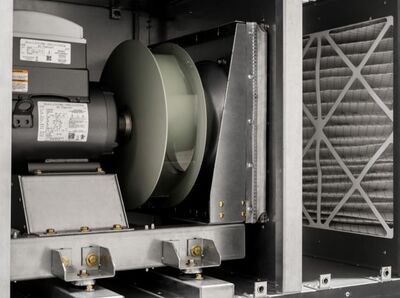4 reasons to upgrade to modern motor systems

Although modern motor technologies offer significant potential energy savings to business owners, the majority of motors currently in use are outdated and inefficient. Here are four reasons why it’s worth updating to more modern motor systems such as magnet-assisted synchronous reluctance motors and variable speed drives.
Cut energy costs now
Globally, electric motors account for almost 70% of electricity used in industrial applications. And 45% of the world’s electricity is used to power electric motors in buildings and industrial processes, including data centres, steel factories, food processing plants, and packaging centres. Unfortunately, most of the electric motors installed in these facilities are outdated and inefficient. This means that most businesses that rely on motors could cut their energy costs now, simply by modernising their motor systems.
By implementing new technologies and industry best-practices, energy efficiency can be improved by up to 30%.
Only pay for the energy you need
When added to an existing motor of a pump, fan or compressor, a variable speed drive can typically reduce power consumption by 25%.
About 70% of industrial motors are used to power fans, pumps and compressors. Most of these operate at partial load, with the motor running at full speed while the speed or flow of the application is controlled mechanically using brakes, throttles or valves. In contrast, using a variable speed drive to control motor speed and torque directly prevents energy being wasted by mechanical speed or flow control. This means that the motor system will only use the amount of electricity that is actually needed, when it’s needed, and no more.
Ensure future compliance
Upgrading to the most efficient motor technology available will help ensure future compliance.
Global electricity consumption could also be cut by as much as 10% through the adoption of highly energy efficient IE5 motor technology, especially when replacing obsolete equipment. Changing only one motor can make a difference.
Regulations are in place to help drive industry to update the installed base, however, these regulations typically specify the minimum acceptable energy efficiency standards. In fact, the latest available motor technology is already significantly more efficient than regulations require. For example, in the US, NEMA actively supports adoption of Premium Efficiency motors (equivalent to IE3) to improve efficiency throughout the market. However, ABB’s EC Titanium technology delivers ultra-premium efficiency (equivalent to IE5), which is considerably more efficient than the minimum requirements, and it delivers 40% lower losses than Premium Efficiency motors.

EC Titanium motors are a highly efficient integrated motor drive that combines synchronous reluctance and permanent magnet technologies for a sustainable, wirelessly connected solution that improves the bottom line. Based on permanent magnet rotor technology, EC Titanium achieves ultra-premium, IE5 efficiency and maintains performance across varying speeds as well as full and part load conditions. This enables equipment to achieve optimal performance no matter the operating point.
This means that VSD-motor packages like the EC Titanium can be configured to the optimum settings for each individual application and deliver improved overall system performance and efficiency. This makes a significant difference for most HVAC applications, for example, where systems operate at 80% load or less, for more than 99% of the time. At full load, the incremental energy savings are around 4%, while at partial load the savings are much greater, at around 12.5%.
Since energy efficiency regulations are likely to get tighter all over the world in the coming years, it makes sense to upgrade motors to more than the minimum standards in advance. This will enable easier compliance, as well as bringing clear energy and cost savings.

Benefit from overall lifetime savings
Upgrading technology now will pay back in savings for the rest of the application lifecycle.
Although many older motors are still in good working order, they are built to meet older, outdated efficiency standards. This means that the whole system is running at a lower than optimum efficiency level, which will continue to add unnecessary costs throughout the lifetime of the application. As a result, it is well worthwhile updating a working motor to improve system efficiency before the end of its working life. The long-term savings far outweigh the initial costs and, in fact, the initial investment can often be paid back in as little as one to three years.
Learn more from ABB Australia today, or read the white paper.
Motor control solutions: Driving efficiency and savings across industries
Australia's path to Net Zero by 2050 underscores the critical importance of enhancing energy...
The next evolution of process wiring
For convenient, cost effective and safer process wiring solutions it is time to leave rigid...
R. STAHL: Pioneering explosion-proof LED lighting solutions for the future
In today's ever-evolving industrial landscape, safety and innovation are paramount.














